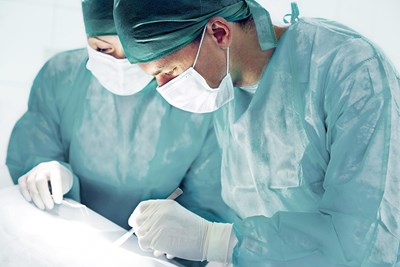Hearing the word “surgery” come out of a doctor’s mouth can be frightening, especially when it’s meant for you. But new procedures are developing every day to make surgery less traumatic, specifically for the body. Here’s a look at a few basic things to understand if your doctor has suggested a laparoscopic procedure.
- Minimally invasive procedure: This includes a wide range of surgical and diagnostic procedures that are used to avoid open procedures, in which the abdomen receives a very large incision that takes longer to heal and leaves the body more open to infection. In addition to laparoscopic procedures and other minimally invasive techniques, there are also robotically assisted procedures, in which surgeons use robotic technology to improve surgery.
- Laparoscope: A laparoscope is the root of laparoscopies. It is a long, slender tube. The tip has a light as well as a camera. An incision about a half inch long is made in the abdomen, into which the laparoscope is inserted. The images it captures when inserted are then sent to a monitor, from which the surgeon can view.
- Diagnostic laparoscopy: These are used for assessing and diagnosing diseases or treatment progression. Imaging technology like ultrasounds are not always sufficient for viewing the progression of liver disease or seeing if cancer has spread. Diagnostic laparoscopies allow a much closer, clearer view of what’s going on abdominally.
- Laparotomy: This is the original method of getting a diagnostic view of the abdomen. A large incision is made in the abdomen through which surgeons can then view certain organs or abnormal growths. However, the chance of infection is greater, there is a larger scar, and recovery time is longer than in a diagnostic laparoscopy.
- Biopsy: If a diagnostic laparoscopy is performed because of an abnormal growth a biopsy can be taken at the same time through the same incision. A small piece of tissue is removed and sent to a pathologist, who then tests the sample for abnormalities.
- Surgical laparoscopy: Laparoscopies can also be used to perform major surgical procedures. The inside of the abdomen is viewed with the laparoscope and additional tools are used to perform the removal of organs or other surgical necessities within the abdominal cavity.
- Single site: Some laparoscopic procedures can be performed through only a single half inch incision made in the abdomen. Some, however, require more for additional tools to be used. Multiple smaller incisions still heal more quickly than one larger incision, though.
- General anesthesia: Most laparoscopic procedures use general anesthesia, in which the patient is put completely to sleep for the duration of the procedure. Certain health conditions or procedures may require general or spinal anesthesia, which numbs only a part of the body or only half of the body, respectively.
- Tracheotomy: During surgery, especially when general anesthesia is used, a trach tube is used to help the patient breathe. A long, flexible tube about the width of the esophagus is guided down the throat, and sometimes inflated, to encourage breathing, administer anesthesia, and prevent vomit or other liquids from choking the patient.
- Carbon dioxide: Carbon dioxide or nitrous oxide are often used with laparoscopic procedures. The abdomen is filled with gas so that the skin and other tissue are lifted away from the organs, allowing the surgeon a clearer view and room to work. Unfortunately, this can irritate the diaphragm and leave the patient bloated sometimes.



